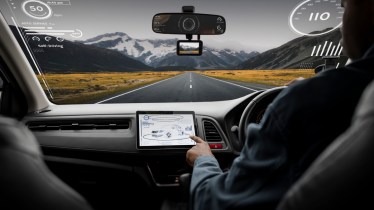Sima.ai, a machine learning company that delivers effortless machine learning deployment and scaling through push-button software, is a five-year-old Silicon Valley-based start-up, that you may or may not have heard of. What sets it apart from the competition is the business model that focuses on software and hardware capabilities.
Financial Express Online spoke to Krishna Rangasayee, Founder & CEO, Sima.ai and automotive industry veteran Harald Kroeger, who heads Automotive and Sales said, India is at the core for Sima.ai When it comes to R&D and software development, India has emerged and grown in stature for most global companies.
Globally, Sima has an employee strength of around 160 people and expanding, of which more than half of the people are based in Bengaluru.
“When you have amazingly capable people, the size of the team, to a certain degree becomes less of an issue. It really comes down to your ability to innovate, partner, and the 30-60 people, we are doing things that many companies with thousands of employees are not able to do. We are definitely in the edge category that we participate in and are leading everybody by a very significant margin,” added Rangasayee.
“You need a brand-new approach to address these critical issues. And this is really where AI and ML have come into a really big way of being the new way to solve these problems with higher accuracy, better speed, and productivity, and also to really dramatically reshape the amount of performance the Compute Engine provides, but also simultaneously reduce the cost and also reduce the power consumption and efficiency. It has gone from a nicety to a necessity,” added Rangasayee.
Solutions for automotive industry
Kroeger pointed out that “We are now at this point where true autonomous driving, probably statistically gets better than people driving less people will be killed.”
He explained that the vehicles have incorporated basic ADAS features in vehicles, with most legacy systems having basic rules in place.
For instance, if the sensors detect an object the rule would be to brake the vehicle. But now the automotive industry is connecting these sensors with AI and ML which means the systems are getting smarter, by first detecting/sensing, analysing and taking a call. For example, if the object is stationary, what kind of object it is, etc.
“In the automotive world, ADAS system based on rule-based algorithms is seeing a big shift towards AI & ML-based systems. Under the hood, it is a completely different technology we are using there,” said Kroeger.
One can simply state that now vehicles not only see and sense their surroundings but also start understanding the various objects around them and start making smarter decisions.
Rangasayee added “We are really in early days, but the door is now open. I expect that not too far in the future it will be illegal to drive a car without some type of standard safety technology (read ADAS). It doesn’t mean that it’s just there’s no steering wheel, driving will still be fun.”
According to Sima.AI estimates less than 5 percent of the cars globally have AI or ML-based ADAS systems.
“But I expect this to change in the next five years, we’re going to have a massive two-digit percentage on that. complete that it will be talking about percentages. I don’t think this will rest with high-luxury cars in North America. I see this happening in every continent, and it will happen in India for sure, too,” added Kroeger.
While the company has not divulged any client names it is working with in the automotive industry, the spokespersons claim that they are in talks and working with several leading global automakers including India.
What is Sima.ai
The start-up claims it is the first Machine Learning SoC (MLSoC) platform (image below), which is purpose-built that allows its customer to effortlessly scale and deploy ML at the embedded edge.
Taking a dual route means that the company is in better control of its solutions by offering higher performance at lower powers.
It is interesting to note that a recent benchmark testing by MLCommons, saw SiMa.ai beat AI chip giant Nvidia Corp in performance and power of chips used on devices like cameras, drones, and robots.
Funding
One of the core aspects for any start-up is to be able to not only build its product/solution but also have the necessary funds to support it, especially in its early stages.
Sima.ai has raised around $200 million (Rs 1,666 crore) to date, depending on one’s perception it may seem like a lot or very less.
“Semiconductors are an expensive business. And so no doubt, we are not just a software company, we are also building a semiconductor business. We are well funded. One thing that is in our DNA is to be very frugal. We are making do with $200 million, depending on your context to either be a lot of money or very little money. All of us have been in the business for 30-plus years, and we know how to build a very capital-efficient model to build silicon. We still have a lot of good runway, and have a lot of active interest in people wanting to invest in us as a company. Raising money has not been an issue, but I would also say that with far less than $200 million we took our Gen One product, silicon, and software into production. And that was pretty hard to get right, we have a proof point of doing it but a lot less money,” shared Rangasayee.
/
